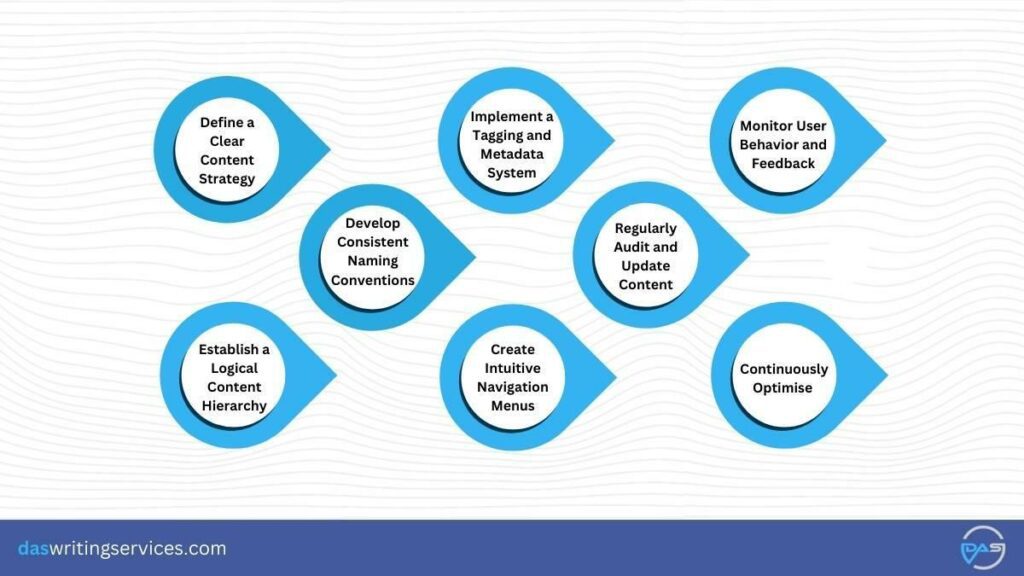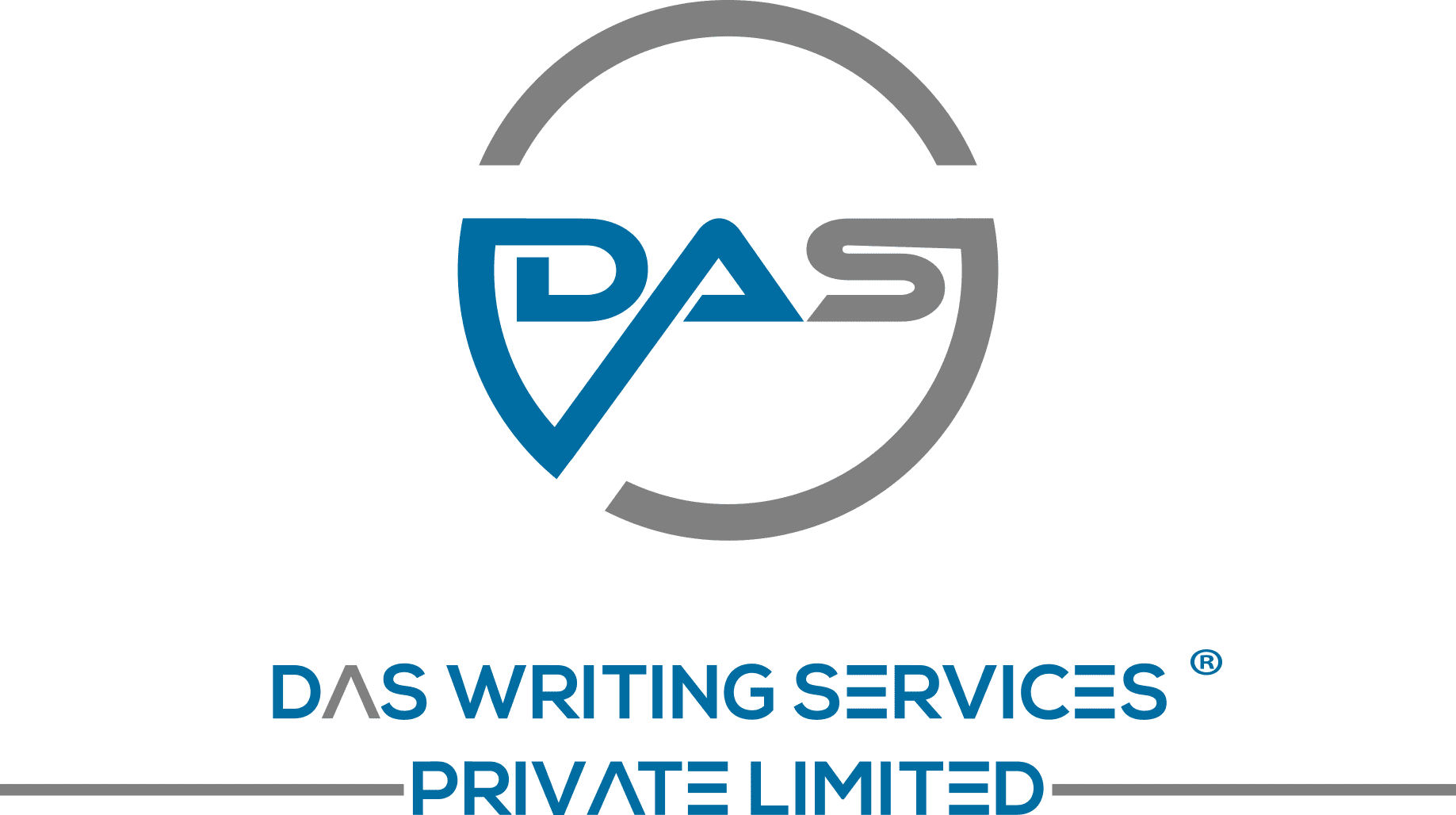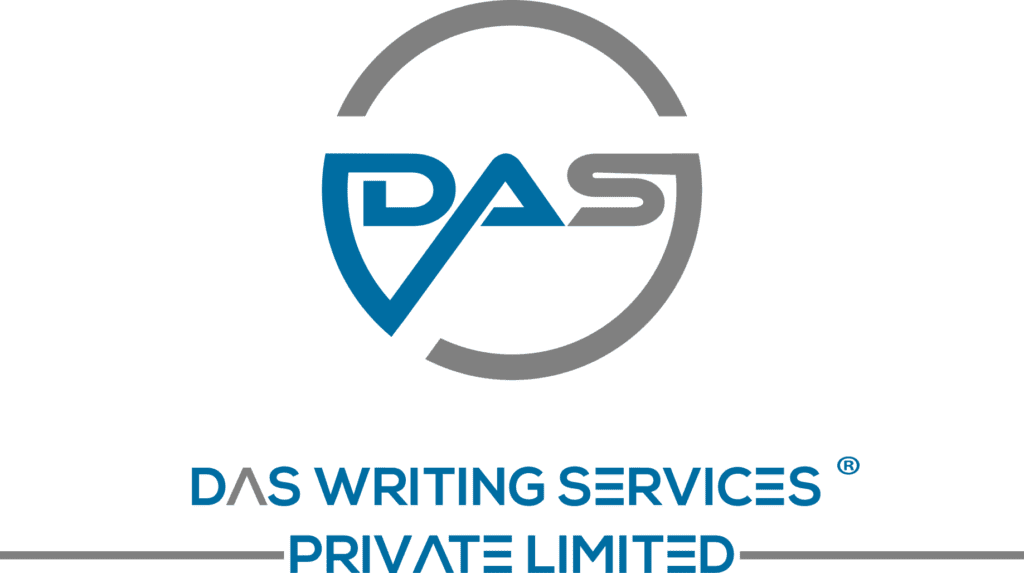Content management includes a wide range of activities and processes aimed at creating, editing, organising, and delivering content to the right audience at the right time. It involves not only the technical aspects of content creation but also the strategic planning and implementation of content marketing strategies.
In this comprehensive guide, we discuss how you can efficiently manage your content and why. We will also explore various techniques that can help you streamline your content workflow so that you can boost your content’s conversion rates.
What is Content Management?
Content management is the systematic process of creating, organising, storing, and distributing digital content in a structured and efficient manner. It involves the use of various tools, techniques, and strategies to effectively manage all types of content, including text, images, videos, and documents.
Content management aims to streamline content creation workflows, helps consistent branding and enhances collaboration among content creators and editors. It also helps to optimise content delivery to the intended audience. By implementing effective content management practices, you can maximise the value of your content assets and achieve your marketing and communication goals.
Why Content Management is Important?
Content management plays a vital role in today’s digital age where the volume and diversity of online content are growing exponentially. Here are several key reasons why content management is crucial:
- Accessibility
Content management ensures that information is easily accessible to the intended audience. It means organising content logically and intuitively which makes it effortless for users to navigate and find the information they need. You can empower users to quickly discover relevant content by implementing effective categorisation, tagging, and metadata systems.
- Consistency
It plays a vital role in maintaining consistency across different platforms and channels. Consistency is the key to establishing a strong brand identity and trust with the audience. By implementing consistent content management practices, organisations can make sure that their tone and visual elements remain aligned across various touchpoints. This cohesion reinforces the brand’s credibility and fosters a sense of familiarity, which overall contributes to brand loyalty and customer engagement.
- Quality
Content management is crucial for maintaining content quality. High-quality and unique content is essential for capturing and retaining the attention of today’s discerning consumers. Content marketers work closely with content creators to establish guidelines and standards so that content is well-researched, accurate, and engaging. By using a content management framework, you can uphold quality standards and maintain a reputable and authoritative online presence.
- Relevance
Content management also includes the process of constantly checking the ongoing relevance and freshness of content. Content can quickly become outdated or lose its relevance. Conducting regular audits and assessments to identify outdated or irrelevant content is a crucial part of content management. By regularly reviewing and refreshing content, you can stay relevant in your respective industry, and attract new audiences.
- Scalability
Content management enables companies to handle content growth effectively. As organisations expand and evolve, their content needs to scale accordingly. Content managers develop scalable strategies to accommodate the increasing demands of a business. They implement flexible frameworks that can handle various content formats.
- Empowering Content Developers
This empowers content creators by streamlining their workflows and providing them with the necessary tools and resources. Content creators can focus on their expertise—creating exceptional content—rather than getting lost in administrative tasks or struggling with inefficient processes. By using efficient content management practices, companies not only enhance productivity but also cultivate a positive work environment.
- Data-Driven Decision Making
Content management supports data-driven decision-making. In the digital realm, data plays a crucial role in understanding audience preferences, behaviour, and trends. A part of management is using analytics and data tracking tools to gain insights into how content performs and what areas can be improved. This data-driven approach enables content managers to refine content strategies and optimise content delivery, driving better results and achieving marketing goals.
Content Management Definitions and Distinctions
Content management encompasses various aspects, each with its distinct role and purpose. Here are the distinctions between content strategy, content management, content operations, and content governance, highlighting their significance in the content ecosystem.
1. Content Strategy
Content strategy is a proactive and comprehensive approach to planning, creating, distributing, and managing content throughout its lifecycle. It involves determining the target audience, setting content objectives, and connecting content activities to overarching corporate goals. Content audits, competitor analysis, user research, and content planning are important components of content strategy.
It focuses on producing worthwhile and pertinent content that connects with the audience and leads to the intended results. A clear content strategy acts as a road map to direct content production and distribution operations.
2. Content Management
The methods, equipment, and technologies used to create, arrange, store, retrieve, and disseminate content are referred to as content management. The handling of digital assets, including text, photos, videos, and other multimedia components, is a part of it. To creating content, cooperation, and distribution easier, content management systems (CMS) are essential.
Content editing, version control, workflow management, and content deployment are features available in CMS platforms. Creating a centralised, organised environment for effective content generation and maintenance is the core goal of content management.
3. Content Operations
The daily execution of content-related tasks within a company is the main focus of content operations. Coordination, cooperation, and resource and workflow optimization are all part of the process. Content operations ensure that it is efficiently and effectively produced, evaluated, approved, and published.
This involves scheduling content, allocating jobs, optimising the workflows for producing content, and integrating different tools and systems to increase efficiency. Content operations seek to minimise inefficiencies and delays while increasing content pace and quality.
4. Content Governance
Content governance covers the policies, guidelines, and processes that define how content is managed, regulated, and controlled within a business. To assure uniformity and compliance, it defines norms and standards for content development, dissemination, and maintenance.
Establishing editorial standards, putting mechanisms in place for content quality assurance, and keeping track of content performance are all parts of content governance. It guarantees that content complies with corporate standards, statutory obligations, and professional standards. A successful content governance program reduces risks and improves the entire content strategy.
5 Simple Steps to Manage Content Strategically:
In the following sections, we will explore the key elements of managing content strategically.
1. Organise and Categorise Content Smartly
Let’s explore the key steps and practices involved in organising and categorising content smartly:

- Define a Clear Content Strategy
Before diving into categorising content, it is essential to have a clear content strategy in place. Define your target audience and tonality first. Understanding your content’s purpose and intended audience will guide your organisation and categorisation decisions.
- Establish a Logical Content Hierarchy
Create a logical content hierarchy that reflects the structure of your website or digital platform. Divide your content into main categories and subcategories, ensuring that each piece of content fits into a relevant category. This structure will make it easier for users to navigate and find the content they need.
- Develop Consistent Naming Conventions
Establish clear guidelines for naming your content files and assets. Consistent naming conventions are crucial for efficient content management. Use descriptive names that accurately represent the content’s topic or purpose. Also, add serial numbers for finding files more easily. Consistency in naming and numbering will help you quickly locate and update content which will minimise confusion and errors.
- Implement a Tagging and Metadata System
Tags and metadata play a significant role in categorising content. Create a set of relevant tags in an Excel Sheet that align with your content strategy. These can include keywords, topics, authors, publication dates, or any other attributes that are important for your content. Applying these to your content assets will improve content filtering.
- Create Intuitive Navigation Menus
Navigation menus are crucial for helping users find content easily. Design navigation menus that align with your content hierarchy. Place important categories prominently in the menu structure that will make it simple for users to locate specific content sections. Consider implementing dropdown menus to provide additional context and aid navigation.
- Regularly Audit and Update Content
Content organisation is an ongoing process. Regularly audit your content to identify outdated or irrelevant material. Remove or update content that no longer serves its purpose. Conducting content audits ensures that your organisation remains accurate and up-to-date, improving the overall quality and relevance of your content.
- Monitor User Behaviour and Feedback
Pay attention to user behaviour and feedback to refine your content organisation. Analyse user engagement metrics, such as bounce rates, time spent on pages, or click-through rates, to gain insights into how users interact with your content. Collect user feedback through surveys or comments to understand their preferences. Use this information to make improvements to your content strategy.
- Continuously Optimise
Content management is an iterative process. Regularly assess the effectiveness of your categorisation methods and how you have been organising your content. Identify areas for improvement and implement optimisations based on user feedback and analytics insights. Continuously refine your content organisation strategy to ensure that it aligns with evolving user needs and business objectives.
2. Create a Content Calendar
A content calendar is a powerful tool that helps you organise and plan content creation and distribution effectively. It provides a structured overview of upcoming content, ensuring consistency and timely delivery.
Let’s explore the key steps and benefits of creating a content calendar for content management:
- Define Your Content Goals and Strategy
Before creating a content calendar, you should define your content goals and strategy first. Determine the objectives you want to achieve through your content, such as brand awareness, lead generation, or thought leadership. Align your content strategy with your overall marketing and business goals to make sure that your calendar supports these objectives.
- Identify Key Content Themes and Topics
Identify the key themes and topics that align with your content goals and your target audience. These themes will form the backbone of your content calendar. Consider conducting keyword research, competitor analysis, and audience research to identify relevant and trending topics that will engage your audience.
- Determine the Frequency of Content Publication
Decide how frequently you will publish new content. Consider your available resources and the demands of your industry. Then determine whether you will publish content daily, weekly, biweekly, or monthly. Establishing a consistent publishing schedule will help you maintain audience engagement and establish expectations for your content.
- Select Content Formats and Channels
Determine the content formats and channels that best suit your target audience and content goals. Consider using a mix of blog posts, videos, infographics, podcasts, social media posts, or webinars. Assess which platforms and channels are most effective in reaching your audience, such as your website, social media platforms, email newsletters, or industry publications.
- Establish a Content Creation Workflow
Develop a content creation workflow that outlines the steps involved in creating, reviewing, and approving content. Identify the key stakeholders and their roles in the content creation process, such as content creators, editors, graphic designers, and subject matter experts. Define deadlines and establish clear communication channels to ensure smooth collaboration and content delivery.
- Plan Content Themes and Topics on the Calendar
With your goals, themes, formats, channels, and workflow in place, it is time to start populating your content calendar. Assign specific themes or topics to each content piece based on their relevance and alignment with your overall strategy. Make a balanced mix of content types to cater to different audience preferences and engagement levels.
- Include Key Dates and Events
Incorporate key dates, events, holidays, or industry-specific milestones into your content calendar. These dates can serve as inspiration for creating timely and relevant content. Consider how you can align your content with these events to increase engagement and tap into trending conversations.
- Set Realistic Deadlines and Publication Dates
Establish realistic deadlines for content review, and approval processes. Allocate sufficient time for research, writing, editing, and design, ensuring that the quality of your content is not compromised. Set publication dates on your calendar to keep track of when each piece of content will be published or distributed so that the contents do not get dumped in the folders
- Monitor and Track Performance
Regularly monitor and track the performance of your content using analytics tools or the calendar will be of no use. Measure key aspects such as website traffic, engagement, social media shares, conversions, or lead generation. Then analyse the data to gain insights into what types of content perform well and adjust your content calendar accordingly.
3. Create a Strong Content Team and Maintain Accountability
Building a strong content team is a crucial aspect of effective management. A skilled and dedicated team together creates high-quality content that you cannot achieve as a one-man army.
Here is how you can create a team as strong as a pillar that will result in ultimate success:
- Define Roles and Responsibilities
Clearly define the roles and responsibilities of each team member involved in content creation and management. This can include content strategists, writers, editors, graphic designers, SEO specialists, and social media managers. Assigning specific roles and responsibilities will help clarity and accountability within the team.
- Hire Professional Content Writers
To ensure the production of high-quality content, consider hiring professional content writers. These writers possess the necessary skills and expertise to create engaging and compelling content.
When hiring professional content writers, consider partnering with reputable content writing services like us, where you can find a team of professional writers who provide high-quality content tailored to your specific needs and goals. Experience the difference with Das Writing Service and enhance your content marketing efforts with expertly crafted content.
Contact Das Writing Service today to elevate your content with the expertise of our professional writers.
- Foster Collaboration and Communication
Encourage collaboration and open communication among team members. Create a supportive environment where ideas can be shared, and feedback can be provided constructively. Foster a culture that values teamwork, knowledge sharing, and continuous improvement.
- Establish Content Guidelines and Standards
Develop comprehensive content guidelines and standards that outline the desired style, tone, voice, and formatting for your content. These guidelines ensure consistency across all content pieces and maintain the brand’s identity. Regularly review and update the guidelines as needed to accommodate evolving industry trends and best practices.
- Conduct Regular Training and Skill Development
Invest in the professional development of your content team. Provide regular training sessions, workshops, or webinars to enhance their skills and keep them updated with the latest industry trends and techniques. This investment in skill development will empower your team to deliver high-quality content and stay ahead of the competition.
- Set Clear Goals and Metrics
Establish clear content goals and metrics to measure success and hold team members accountable. Define key performance indicators (KPIs) such as website traffic, engagement rates, conversions, or lead generation. Regularly review and analyse these metrics to assess the effectiveness of your content and identify areas for improvement.
- Implement a Project Management System
Utilise a project management system or management platform to streamline content workflows and track progress. These systems help with task assignments, deadline management, collaboration, and version control. By implementing a project management system, you can maintain accountability and ensure that content projects are completed efficiently and on time.
- Conduct Regular Performance Reviews
Regularly conduct performance reviews to assess individual and team performance. Provide constructive feedback and recognise achievements. Performance reviews are an opportunity to address any issues, align goals, and motivate team members to continually improve their content creation and management skills.
- Encourage Continuous Learning and Growth
Encourage a culture of continuous learning and growth within your content team. Support team members in attending conferences, webinars, or industry events. Provide opportunities for them to expand their knowledge and stay updated with industry trends. This investment in professional growth will benefit both the individuals and the overall performance of the content team.
- Foster a Positive and Supportive Work Environment
Create a positive and supportive work environment that values creativity, collaboration, and well-being. Recognise and reward team members’ contributions and achievements. Encourage work-life balance and foster an inclusive and diverse team culture.
4. Encourage a Collaborative Environment Where Everybody is Involved
Creating a collaborative environment is essential for effective content management. When everyone in the team feels valued and involved, it encourages creativity and leads to better content outcomes.
Let’s explore key points on how to promote a collaborative environment:
- Foster Open Communication
Encourage open and transparent communication among team members. Create channels for sharing ideas, feedback, and suggestions. Foster an environment where everyone feels comfortable expressing their thoughts and opinions. Regularly schedule team meetings, brainstorming sessions, or virtual collaborations to facilitate communication and collaboration.
- Embrace Cross-Functional Collaboration
Promote cross-functional collaboration among team members with diverse skill sets. Encourage content writers, designers, SEO specialists, and other stakeholders to work together on projects. Cross-functional collaboration allows for a holistic approach to content creation, leveraging the strengths and expertise of each team member.
- Promote Knowledge Sharing
Encourage team members to share their knowledge, insights, and best practices. Organise knowledge-sharing sessions, lunch-and-learn events, or workshops where team members can present their expertise and learn from each other. Implement a knowledge-sharing platform or internal wiki where valuable resources, tips, and guidelines can be shared.
- Foster a Culture of Collaboration, Not Competition
Create a culture that emphasises collaboration rather than competition. Encourage team members to support and help one another, fostering a sense of camaraderie and shared success. Celebrate team achievements and recognise the contributions of individuals. By fostering a collaborative culture, team members will feel motivated and empowered to work together towards common goals.
- Assign Collaborative Projects
Assign collaborative projects that require team members to work together. This could involve joint content creation, cross-departmental initiatives, or inter-team collaborations. By working on projects collectively, team members can learn from each other, leverage their combined expertise, and produce content that reflects diverse perspectives and insights.
- Encourage Feedback and Idea Generation
Create an environment where feedback and idea generation are encouraged. Provide opportunities for team members to provide constructive feedback on each other’s work. Establish channels for submitting and discussing ideas for content improvement or innovation. Encouraging feedback and idea generation fosters a sense of ownership and involvement among team members.
- Lead by Example
Leaders and managers play a critical role in setting the tone for collaboration. Lead by example by actively participating in collaborative activities, seeking input from team members, and valuing their contributions. Show appreciation for collaborative efforts and provide opportunities for growth and development within the team.
- Provide Collaboration Tools and Technologies
Equip your team with collaboration tools and technologies that facilitate communication, file sharing, and project management. This could include project management platforms, team messaging apps, shared document repositories, or video conferencing tools. Choose tools that fit your team’s needs and enable seamless collaboration regardless of location or time zone.
- Recognise and Celebrate Collaboration
Recognize and celebrate collaboration within the team. Highlight successful collaborative projects, acknowledge team members who actively contribute to a collaborative environment, and publicly appreciate their efforts. By recognizing and celebrating collaboration, you reinforce its importance and inspire others to embrace collaboration as well.
- Continuously Evaluate and Improve
Regularly evaluate the effectiveness of the collaborative environment and seek feedback from team members. Identify areas for improvement and implement necessary changes. Encourage a culture of continuous improvement, where feedback is valued, and efforts are made to enhance collaboration and involvement among team members.
5. Use the Appropriate Tech to manage Everything Smoothly
Utilising the appropriate technology is crucial for smooth management. The right tools and platforms can streamline processes.
Here are some tools you will need to efficiently manage your content.
- Content Management Systems (CMS)
A Content Management System (CMS) is a powerful tool that simplifies content creation, organisation, and publication. With a CMS, you can easily create and edit content, manage user roles and permissions, and publish content across various channels. CMS platforms like WordPress, Drupal, and Joomla offer user-friendly interfaces and customizable templates. They also offer content version control, which contributes to efficient management.
Here are some reasons why you should use a CMS
- Easy Content Creation and Editing: CMS platforms provide intuitive interfaces and WYSIWYG (What You See Is What You Get) editors, making it easy for people to create and edit content without any coding knowledge. This empowers non-technical users to contribute to content management efforts.
- Centralised Content Organisation: These offer centralised repositories for storing content assets. You can categorise content into folders, apply tags and metadata, and establish hierarchies.
- Collaborative Workflows: CMS platforms facilitate collaboration among content team members. Multiple users can access and edit content simultaneously, with built-in version control features that track changes and allow for easy rollback if needed. This promotes efficient teamwork and enhances productivity.
- Content Publishing and Scheduling: CMS lets you publish and schedule content with ease. It provides features to set publication dates and times, preview content before publishing, and automate content publication across various channels. You can maintain timely and consistent content delivery with this feature.
- Customisation: CMS platforms offer flexibility and customisation options to meet specific needs. They allow for the creation of custom content types and templates.
- Content Governance and Control: They provide control and governance over content. Content managers can define user roles and permissions, ensuring that only authorised individuals can take control.
- SEO Optimisation: Many CMS platforms include built-in SEO features or offer integrations with SEO tools. This helps the content publisher to optimise content for search engines by adding meta tags, managing URL structures, and incorporating SEO best practices.
- Content Planning and Calendar Tools
Content planning and calendar tools like Trello Editorial Calendar, and Google Calendar assist in organising and scheduling content. These tools provide a visual overview of the content pipeline, which can ease up understanding of the assignment of publication dates, and help track content progress.
- Collaboration and Communication Platforms
Collaboration and communication platforms such as Slack, Microsoft Teams, and Google Workspace encourage effective teamwork and communication within content teams (or, any teams). These platforms provide instant messaging, file sharing, and real-time collaboration features. You can enjoy seamless communication, document sharing, etc. attractive features which will promote a productive work environment.
- Analytics and Performance Tracking Tools
Analytics and performance-tracking tools like Google Analytics help measure the effectiveness of content strategies. These tools provide valuable insights into user behaviour, engagement metrics, conversion rates, and other key performance indicators.
- SEO and Keyword Research Tools
SEO and keyword research tools such as Moz, Ahrefs, and Google Keyword Planner aid in optimising content for search engines. You can check the keyword difficulty, search volumes and all the necessary insights before deciding on the content’s topic and keyword. This is very important for a higher rank on SERPs.
- AI-Powered Content Tools
AI-powered content tools such as Grammarly, and Copyscape premium help content managers in various aspects of content creation and optimisation. These tools provide automated grammar and spelling checks, and content optimisation suggestions.
At Das Writing Services, our team of professional writers and editors uses these tools to ensure the highest quality of content for our clients. Grammarly helps us meticulously review grammar, spelling, and writing style, ensuring error-free and polished content. With Copyscape, we conduct thorough plagiarism checks to guarantee that our content is original and unique.
Final Takeaway
Effective content management plays a vital role in achieving success in today’s digital world. You can streamline content creation, organisation, and distribution processes By implementing the right strategies and utilising the right tools.
However, to truly elevate your content, it is crucial to have skilled and professional writers who can deliver unique content tailored to your specific needs. At Das Writing Services, we take pride in our team of experienced writers who are well-versed in various industries and writing styles. They possess the expertise to produce engaging, informative, and persuasive content that captivates your audience.
Experience the difference that expertly crafted content can make in boosting your online presence. Contact us today and let our talented writers and editors take your content to new heights.
Frequently Asked Questions
- Is content management only relevant for large businesses?
No, content management is important for businesses of all sizes. No matter if you have a small business or a large organisation, managing your content efficiently is very important for maintaining consistency and engaging your audience effectively.
- How can content management contribute to content reuse and repurposing?
Content management systems enable content reuse and repurposing by providing a centralised repository of content assets. It makes it easier to locate, and repurpose existing content for different channels or target audiences. This maximises the value and longevity of your content.
- What are the benefits of outsourcing content management to a specialised service provider?
Outsourcing content management to a specialised service provider, such as Das Writing Services, allows you to leverage the expertise and experience of professionals who specialise in content creation. It ensures high-quality content and allows you to focus on other core business activities.
- How does content management impact user experience?
Effective management provides a seamless and intuitive user experience. Well-organised and easily accessible content enhances navigation and improves overall user satisfaction.
- What is the difference between content creation and content management?
Content creation refers to the process of developing new content, while content management involves many aspects like organising, distributing, and maintaining that content over time. Content management focuses on the lifecycle of content beyond its initial creation.





Leave a comment
All comments
Arghish Das
This is a great article! It's really interesting to see how emojis can be used in marketing. Are there any specific guidelines or etiquette to follow when using emojis in professional emails or other formal communications?